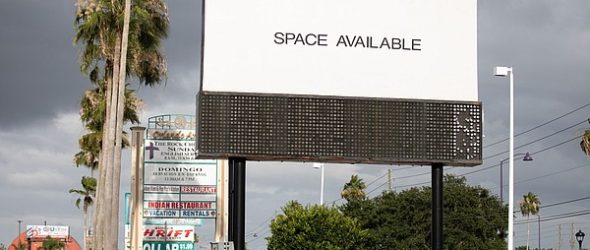 https://cannabisexaminers.com/wp-content/uploads/2020/07/195668407_billboards-6caa9ce2-cc15-11ea-bc6a-6841b28d9093_t600.jpg
https://cannabisexaminers.com/wp-content/uploads/2020/07/195668407_billboards-6caa9ce2-cc15-11ea-bc6a-6841b28d9093_t600.jpg
Surprising as it may seem now, 2020 was supposed to be a great year for billboard ads.
New kinds of marketers, like the burgeoning marijuana industry, were flocking to outdoor advertising, letting it outshine other media.
Then covid-19 hit, forcing restaurants and other stores to close. In all, local businesses that account for 60% of out-of-home ad sales began canceling spots.
According to researcher Magna Global, the second quarter of 2020 will show a 40% drop in revenue from a year earlier. When financial results come out in the coming weeks, Clear Channel Outdoor Holdings and Outfront Media are expected to post declines of up to 50%, based on company forecasts and Wall Street estimates.
“We were really experiencing a golden age for out-of-home advertising,” said Anna Bager, chief executive officer of the Out of Home Advertising Association of America, an industry group.
Unlike other legacy media — newspapers and magazines — out-of-home ads were forecast to grow annually through 2024, buoyed by spiffy digital signs and new customers like marijuana dispensaries, Magna Global estimated in December. Shares of Lamar Advertising, the leader with a market value of more than $6.6 billion, rose 29% last year.
[CORONAVIRUS: Click here for our complete coverage » arkansasonline.com/coronavirus]
The companies, which declined to comment or didn’t respond to inquiries, have moved to conserve cash and refinance debt. Outfront suspended its dividend, cut its workforce and trimmed investment. Lamar slashed its payout and outlays on lucrative digital billboards by half amid forecasts of a 17% drop in quarterly sales. Outdoor companies are also offering clients discounts and easier payment schedules.
“Digital billboards make up 5% of all the billboards at most of these companies, but they bring in almost 20% to 25% of revenue,” said Geetha Ranganathan, a Bloomberg Intelligence analyst. “It’s a huge growth driver.”
During the pandemic, many advertisers have dropped billboards for online media. With so many people at home and working online, some marketers see the internet as a better buy.
Tourism bureaus are among those making adjustments.
“We’ve counseled our tourism partners, like the Wyoming Office of Tourism, to shift most traditional out-of-home advertising to digital channels,” Jeremy Whitt, senior vice president of media strategy at advertising agency BVK, said in an email. The travel office will evaluate “other media channels, such as traditional and digital out of home, in the future.”
Because marijuana has been legalized on a patchwork basis, cannabis retailers initially flocked to out-of-home advertising, including billboards. According to Kantar Media, 43% of cannabis spending went to outdoor in the first four months of 2020.
Weedmaps, an online platform for the industry, is one such marketer. The company has used billboard ads where recreational use is legal, including Los Angeles and Portland, Ore., according to Juanjo Feijoo, chief marketing officer.
“Most of the marketing dollars end up basically navigating toward either cannabis-specific digital platforms, like Weedmaps, or to traditional media, which I think has taken a more open approach to cannabis,” Feijoo said. During the pandemic, the billboard industry, he said, has wisely pivoted to helping customers, such as offering flexibility in payments, discounts and ways to make up for missing eyeballs.
The out-of-home industry is expected to resume growth in 2021, as curbs on businesses lift and people go out more. Magna Global forecasts a 9% gain next year, according to Vincent Letang, executive vice president of global market intelligence at the firm.
There are already some signals. According to INRIX, which monitors traffic, passenger travel in the U.S. has returned to pre-covid levels. RV sales have skyrocketed, too, meaning more vacationers taking in billboard ads on the highways.
“There’s going to be a lot of driving for sure,” Bager said.

